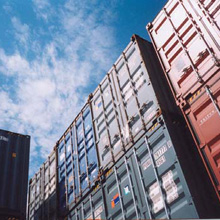 |
| The installation includes more than 50 fixed and PTZ Bosch cameras with VideoJet X10 and VIP X1 encoders |
End User:
Port of Greater Baton Rouge is one of the top 10 ports in the United States and ranks 32nd in the world in total annual tonnage. It is situated 230 miles from the Gulf of Mexico on the Mississippi River and the U.S. Gulf Intracoastal Waterway. It covers multiple facilities that span 85 miles of the Mississippi River and encompasses Ascension, East Baton Rouge, Iberville and West Baton Rouge Parishes in its Port jurisdiction.
Business Objective:
The port needed a security solution that would ensure the secure transport of cargo and the safety of staff and visitors working within the confines of the port - including dock workers, truck drivers and the personnel of tenant companies with operations on port property. The solution also needed to conquer the logistical issues of the port's main Mississippi River Terminal and Inland Rivers Terminal, such as the large distance between the locations.
Solution:
The installation includes more than 50 fixed and PTZ Bosch cameras, with VideoJet X10 and VIP X1 encoders strategically placed throughout each location. Connectivity to the cameras and encoders is provided via an IP network, including point-to-point and point-to-multipoint wireless devices, as well as more than a mile of multi-mode fiber optic cable.
Protection against intermittent network connectivity is built into the system with the use of encoders with two gigabytes of storage. If network connectivity is lost, recording at the edge continues. Once connectivity is restored, the central NVR tracks any gaps in the recording and automatically replenishes the missing pieces with the stored video.
Each authorizedoperator has instant access to live video from all cameras, as well as any new camera that may be added to the system, using the VIDOS Video Management Software Suite. Archived video is stored centrally on four NVRs using several terabytes of fault-tolerant RAID array storage.Cameras positioned on the Mississippi River feature video content analysis capabilities, which primarily help to draw operators' attention to significant events, while also reducing the amount of video traffic sent across the network. Using VCA at the edge, only alarm video, such as a vessel moving up the shipping channel or an unauthorized ship present in the river, is transmitted. An alarm notifies security officers and a PTZ camera will automatically track the vessel.
Result:
The cost-effective system allows key personnel access to security data from a number of locations. With remote management tools, port executives and facility security officers can manage the installed devices from the internal network or through secured Internet access.
The solution is an essential element to security, stepping in where fencing and gates is impractical, if not impossible, along the waterfront.


















